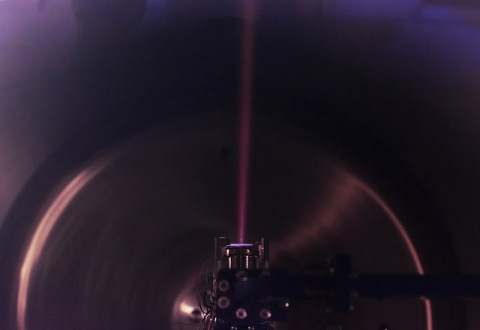Momentus Vigoride-5 Status Update #4

“Momentus is now using a water propellant system to control the spacecraft, achieving a key objective of our Vigoride-5 mission,” said
The Attitude Control System senses the spacecraft’s orientation in space using sensors such as star trackers and gyroscopes. The spacecraft can be commanded to maintain any required pointing orientation. The spacecraft is kept in position with thruster firings of its Reaction Control System. The Reaction Control System uses a unique water-based system to provide thrust which controls the vehicle’s orientation.
While the primary purpose of the Reaction Control System is to control the vehicle’s orientation, this system also has the ability to maneuver the spacecraft, including changing its altitude and inclination in space. This is part of the robust design of the Vigoride spacecraft with redundant systems to enable the spacecraft to perform missions such as deploying customer satellites in unique orbits. The Reaction Control System operates using the same propellant and tank with water as the Vigoride spacecraft’s primary MET propulsion system.
The MET is designed to use water as a propellant and produce thrust by expelling extremely hot gases through a rocket nozzle. Unlike a conventional chemical rocket engine, which creates thrust through a chemical reaction, the MET is designed to create a plasma and thrust using microwave energy.
When operational, the MET will be used to raise the orbital altitude and inclination of Vigoride-5. Orbital altitude and inclination changes can enable
“Momentus is a pioneer in commercializing the MET and we look forward to our planned demonstration in the coming days of this innovative technology with a higher efficiency or specific impulse than conventional chemical propulsion systems that are used in the space industry,” said Rood.
About
Forward-Looking Statements
This press release contains certain statements which may constitute “forward-looking statements” for purposes of the federal securities laws. Forward-looking statements include, but are not limited to, statements regarding the aggregate value of Common Shares which may be issued pursuant to the ATM Program and Momentus’ expected use of the net proceeds from the ATM Program, if any. Because forward-looking statements relate to the future, they are subject to inherent uncertainties, risks and changes in circumstances that are difficult to predict and many of which are outside of Momentus’ control. Many factors could cause actual future events to differ materially from the forward-looking statements in this press release, including but not limited to risks and uncertainties included under the heading “Risk Factors” in the Annual Report on Form 10-K filed by the Company on
View source version on businesswire.com: https://www.businesswire.com/news/home/20230323005766/en/
Investors
Media
Source:








